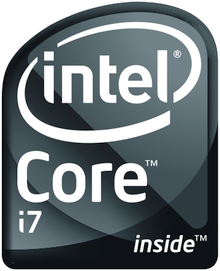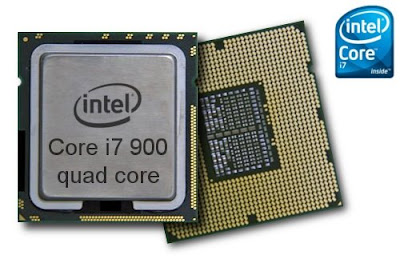
The latest generation of Intel x86-compatible microprocessors, branded Core i7, was released on November 17, 2008. Intel Core i7 microprocessors are based on new Nehalem microarchitecture, which, like AMD K8 microarchitecture, replaces Front-Side Bus interface with on-die memory controller with its own dedicated memory bus, and a separate QuickPath Interconnect (QPI) controller that uses point-to-point protocol to communicate with I/O devices and other processors in multi-processor systems. Server-class Core i7 CPUs will have two point-to-point links.
There are many other performance improvements in Core i7 processors, such as enhanced branch prediction, secondary 512-entry TLB buffer, new SSE4.2 instructions, and others.
Intel Core i7 microprocessors are packaged in 1366-land Land-Grid Array (LGA) package, and require socket 1366 motherboards. Future Core i7 processors may also be packaged into 1160-land package.

Other major features of the Nehalem microarchitecture include:
There are many other performance improvements in Core i7 processors, such as enhanced branch prediction, secondary 512-entry TLB buffer, new SSE4.2 instructions, and others.
Intel Core i7 microprocessors are packaged in 1366-land Land-Grid Array (LGA) package, and require socket 1366 motherboards. Future Core i7 processors may also be packaged into 1160-land package.

Other major features of the Nehalem microarchitecture include:
- Quad-core design on a single die. Previous generation of Intel quad-core processors, Core 2 Quad, essentially packed two dual-core processors into one package.
- Future Core i7 CPUs may have up to 8 cores.
- Each core now includes non-shared very low latency 256 KB level 2 cache. All cores share large level 3 cache.
- Turbo Boost technology improves performance of single or dual-threaded applications by increasing the frequency of one or two cores when other CPU cores are idle.
- Simultaneous Multi-Threading feature adds Hyper-Threading technology to each microprocessor core, which allows any Core I7 quad-core CPU to execute 8 threads at the same time.



